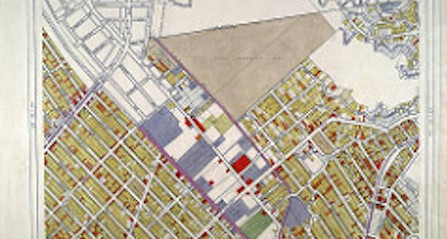
One of the world’s oldest professions is also one of the most in-demand jobs for recent graduates. According to the Department of Labor Statistics, employment opportunities for land surveyors are excellent. The reason? With land development growing at twice the speed of the U.S. population, surveyors are sought after. A stunning 95 percent of students find a job within four months of graduation.
What They Do
The primary responsibility of the average land surveyor is to make precise measurements in order to determine property boundaries. The data they provide is needed for engineering, mapmaking, and construction. In addition to determining the exact location of construction projects based on property lines, land surveyors also dictate the proper depth for building foundations. Clients may include private land developers, government agencies, and others.
Tools of the Trade
According to historians, land surveying dates back to the earliest human civilizations. In Ancient Egypt, for example, early practitioners used chains and steel bands to subdivide the fertile lands around the Nile River for farming. Recent technological advances have made the profession far more precise and less physically demanding. Although they still spend a lot of time in the field, modern surveyors don’t have to do as much walking because their tools, such as a theodolite, measure distance with the help of global positioning system (GPS) technology. These measurements can then be used to present data visually as charts, reports, or maps. They can even create computerized maps to give builders and architects a clearer picture of the land they’ll be working on.
Where They Work
Official employment statistics confirm that the overwhelming majority of surveyors work for private surveying or engineering firms. A much smaller portion is employed by state or local governments. As for the industries they work in, more than two-thirds of land surveyors ply their trade in the architectural and/or engineering fields. Nearly ten percent work for local or state governments, while about half that number (five percent) work in heavy or civil engineering construction. A slightly smaller group is employed by the mining, quarrying, and oil and gas extraction industries.
But no matter who they work for, land surveyors must split their time between field and office work. When in the field, surveyors often work in teams or crews, taking measurements on the job site. Though they are rarely required to walk long distances, surveyors must still inspect land features and take measurements from different spots. This often involves climbing up small hills with heavy packs filled with surveying equipment and instruments. As such, the average surveyor must be physically fit.
Education & Training
Modern surveyors must have a strong academic background in science, mathematics, and mapping. Although some colleges offer a bachelor’s degree program to prepare students to become land surveyors, many have degrees in related fields such as forestry or civil engineering. After graduation, all prospective surveyors must work under a licensed surveyor for about two years to qualify for a surveying license of their own. They must also pass the Principles and Practice of Surveying (PS) exam, which is administered by the state.
Although it takes many years of study and hard work, becoming a land surveyor offers excellent employment opportunities.





